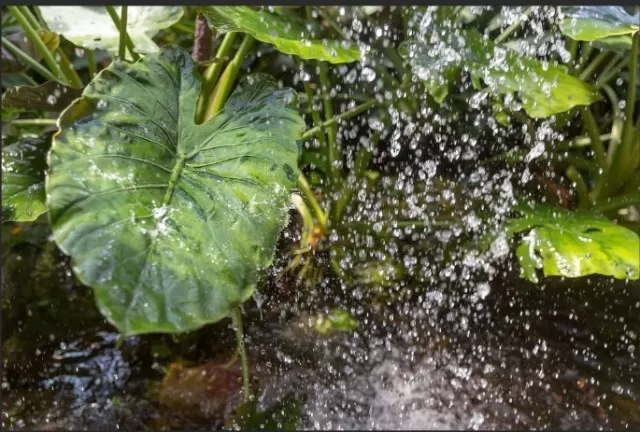Selecting the Perfect Plants for Your Fall Garden (Part 1).The arrival of fall doesn’t signal the end of tending to your garden; rather, it presents an opportunity to carefully select the perfect plants to enhance your autumn landscape. With thoughtful planning and the right choices, your garden can continue to flourish with vibrant colors and textures throughout the fall season. By opting for late-blooming flowers, ornamental grasses, and foliage that showcases rich autumn hues, you can extend the beauty of your outdoor space. Additionally, consider incorporating elements such as fire pits or outdoor heaters to ensure you can continue to enjoy your garden even as the temperature drops. Fall is a season of transition, and with the right plants and features, you can make this transition a stunning and memorable one in your garden.
Extend Your Outdoor Enjoyment: A Beautiful Landscape for Fall

As the crisp weather of fall approaches, it’s true that many outdoor activities and chores wind down.
Lawn mowing, patio lounging, and swimming may come to an end, and some garden plants may be nearing the end of their life cycles. However, with thoughtful planning and the right selection of plants and landscaping elements, it’s entirely possible to cultivate a beautiful landscape that will keep your outdoor space vibrant and inviting throughout the fall season.
Consider incorporating late-blooming flowers, ornamental grasses, and foliage with rich autumnal colors into your landscape design.
By choosing the right plant varieties, you can enjoy a burst of color and texture that enhances your outdoor space well into the fall months. Additionally, elements like fire pits or outdoor heaters can extend the usability of your patio, allowing you to continue enjoying your outdoor oasis even as the temperature drops.
With some creative landscaping and the right features, you can make the most of the fall season in your outdoor space, creating a welcoming and beautiful environment that you can cherish even as winter approaches.
Garden Smarter: Be Informed About Your First Frost Date
Before you embark on your gardening endeavors, it’s crucial to be well-informed about your region’s first frost date.
While it’s not an exact science and represents an average estimate, this date is essential to know as it marks the time when you can expect the first frost of the season. Frost can be detrimental to various plants and significantly slow down the growth of others, making it a critical piece of information for gardeners.
To find out your first frost date, you can easily obtain this information by entering your zip code on a trusted online resource dedicated to tracking frost dates.
By planning your gardening activities around this date, you can protect your plants and ensure they have the best chance of thriving in your specific climate conditions.
Garden Wisely: Understand Your Local Rainfall Patterns

Understanding your region’s rainfall patterns is a fundamental aspect of successful gardening.
It plays a crucial role in determining whether you should opt for drought-tolerant plants, especially as the weather cools and people tend to reduce their watering efforts.
By being aware of your area’s typical rainfall figures, you can make informed decisions about the types of plants that will thrive in your climate.
Drought-tolerant options like the Arbequina olive are excellent choices for regions with hot weather and minimal rainfall. These plants can withstand dry conditions and reduce the need for extensive watering, making your gardening efforts more sustainable and environmentally friendly.
Being in tune with your local rainfall patterns allows you to select the right plants for your garden, ensuring their health and vitality while conserving water resources.
Enhance Your Fall Garden with Trees and Grasses
As the temperatures cool in the fall, it’s an excellent time to consider planting trees and ornamental grasses in your garden.
The still-warm soil provides favorable conditions for root growth without the stress of sweltering heat.
When it comes to trees, you have several appealing options for fall planting.
Consider varieties like maples, pines, fig trees, and black diamond crape myrtle trees. These trees can establish their roots before the winter chill sets in, setting them up for healthy growth in the coming seasons.
Ornamental grasses are another fantastic addition to your fall garden.
As the summer heat subsides, these grasses thrive and add texture and visual interest to your landscape. Popular choices include Blue Oat, Purple Fountain Grass, and Little Bluestem, which can provide stunning accents to your fall garden.
By incorporating trees and ornamental grasses into your garden in the fall, you can diversify your landscape, enjoy beautiful foliage, and set the stage for a thriving garden in the seasons to come.
Zone Wisdom: Choose Plants Wisely Based on Hardiness

Selecting plants that are well-suited to your region’s hardiness zone is essential for gardening success.
Each plant comes with information indicating whether it’s suitable for your specific hardiness zone, helping you make informed choices.
You can determine your USDA Hardiness Zone by checking online resources that provide zone maps based on your location.
It’s important to note that your zone serves as a general guideline, but with creativity and proper protection, you can cultivate a wide range of plants outside of your zone.
For inspiration, consider the example of a Montreal resident who created a tropical backyard oasis in a location where it might not seem possible.
By understanding your hardiness zone and experimenting with creative gardening techniques, you can achieve remarkable results in your garden, regardless of your zone’s limitations.
*The information is for reference only.